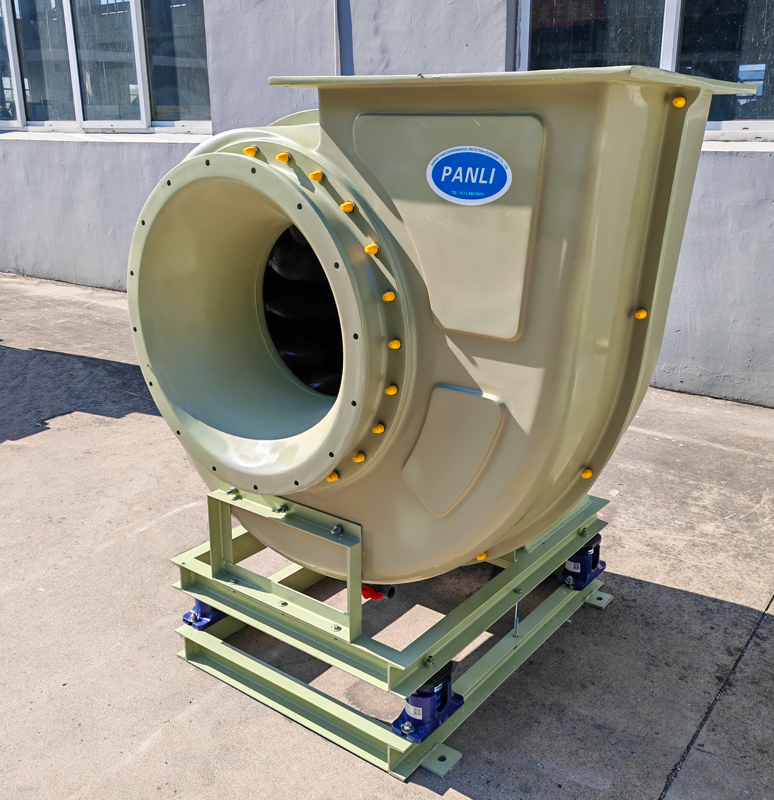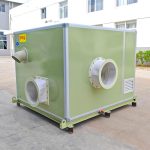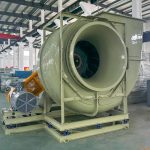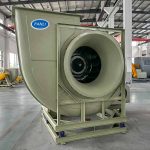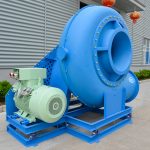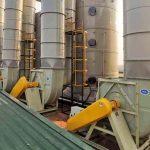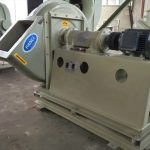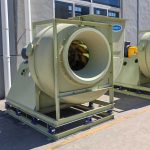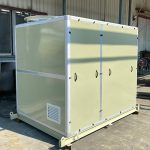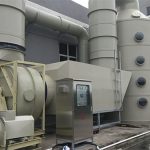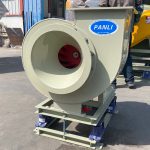Εργαστηριακός ανεμιστήρας
Εργαστηριακός ανεμιστήρας
- Fan model: FB710A
- Fan air capacity: 11775~19255 CMH
- Fan pressure: 1509~867 Pa
- Rotor balance: ≤ 2.5mm/s
- Operating temperature: ≤ 60℃
- Noise standard: ≤ 75dB
- Fan speed: 1460 rpm
- Ισχύς κινητήρα: 11KW
- Air duct diameter: DN600~DN700
- Fan accessories: rainproof cap or elastic soft joint, etc. [customized]
Εισαγωγή προϊόντος
Special fiberglass reinforced plastic (FRP) fan for laboratories. The whole is made of all-FRP, the thickness accuracy of the blades is ±0.3mm. The material is cut by a five-axis engraving machine. The quality control is strict. It conforms to the energy label efficiency standard. Customized as required to optimize costs and save electricity consumption. It undergoes strict factory tests and is delivered after meeting the requirements.
CNEX explosion-proof certification and other testing qualification recognition, is a "high-tech enterprise".
24 hours a day online intimate service, 1 hour to analyze and eliminate problems, 48~ one to one national logistics delivery, rest assured to use, worry free after use, use again, save costs
Εφαρμόσιμα σενάρια
The laboratory fan is used in the laboratory test environment to absorb, treat and discharge experimental chemical components; This kind of product is designed and manufactured for laboratory research and development, low noise, low vibration, low cost, stable operation, 24 hours trouble-free operation, reduce the chance of damage, frequent maintenance, saving operating costs.
A Laboratory Fan is a precision-engineered air-handling device designed to maintain safe and clean ventilation in laboratory environments. Its purpose is to extract contaminated air from fume hoods, exhaust ducts, and experimental chambers, ensuring controlled negative pressure and safe operator conditions. Laboratory fans can be constructed from fiberglass, polypropylene (PP), PVC, or stainless steel, depending on the type of chemical vapors and the laboratory’s corrosion resistance requirements.
The most common design is centrifugal, utilizing a backward-curved or radial impeller for stable pressure and efficient air delivery. Motors are selected for low noise and continuous operation, often with frequency control for adjustable airflow. The bearing housing is isolated from the airflow, and the entire fan is designed for easy cleaning and maintenance. For laboratories handling volatile chemicals, the fan can be equipped with explosion-proof motors and spark-free impellers.
Noise control and vibration isolation are integral design elements. Fans are typically installed with flexible connectors and silencers to minimize transmission of vibration to the building structure. Housing materials such as FRP or PVC ensure chemical resistance, while stainless-steel variants are used for cleanroom and biological research environments requiring sterilizable surfaces.
Performance ranges from 300 m³/h to 30,000 m³/h, with pressures between 200 and 2,000 Pa. Laboratory fans are essential in chemical laboratories, research institutions, medical testing facilities, and production testing centers. By maintaining reliable exhaust performance, chemical fume containment, and consistent airflow, laboratory fans ensure operator safety and air quality control—critical factors in modern scientific and industrial research facilities.



